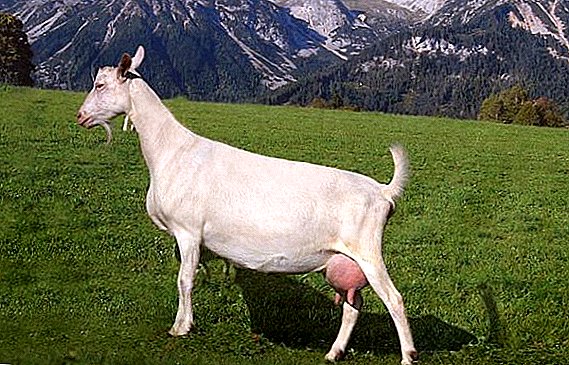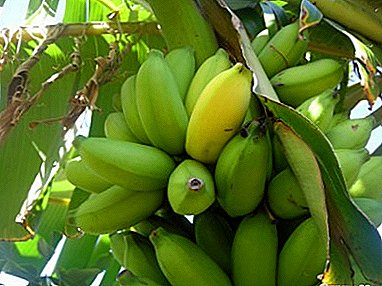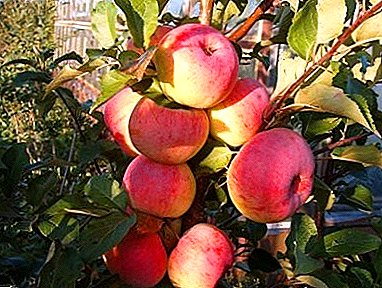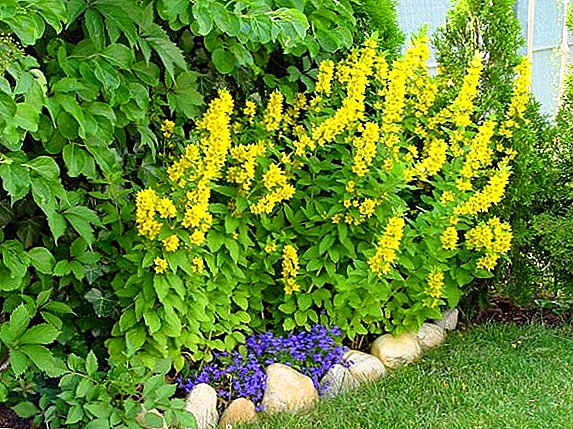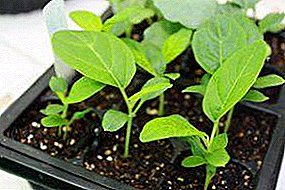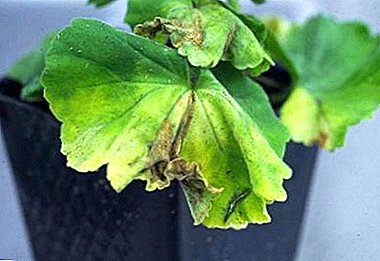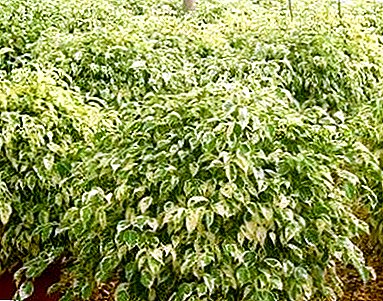
Shiny green leaves Golden King - varietal species of ficus Benjamin - have a length of up to 7 cm and are edged at the edges with a yellow stripe.
In nature, Benjamin's ficuses are thirty-meter evergreen trees with powerful aerial roots.
They are found in the South Asian tropics and in the north of the Australian continent.
Description
In room culture, ficus varieties obtained from a powerful natural “ancestor” are demanding to heat and light, sensitive to excess moisture in the soil, permutations and turns.
Home care
Lighting
This variegated form requires the most bright light.
The best will be the lighting, which provides windows facing south-east, south or south-west.
Plants are useful "summer vacation" in the open air balcony or area with protection from the scorching midday sun.
Temperature
The best summer temperature range - from 25 to 30 degrees; winter temperature should not be below 18 degrees.
ATTENTION: Draft is contraindicated, as well as frequent changes, as well as turns.
Priming
The optimum soil substrate should be slightly acidic or neutral, quite loose, nutritious and moisture-intensive.
You can use ready-made soil for ficuses, or mix two parts of sod and leafy soil with one part of coarse sand.
Recommend and this composition:
- turfy, leafy, peaty ground with sand;
- all ingredients in equal quantity.
Planting and transplanting
Landing
 The container for planting can be of a standard form: (the vertical size is between a quarter and a third of the height of the plant), with an obligatory drainage hole.
The container for planting can be of a standard form: (the vertical size is between a quarter and a third of the height of the plant), with an obligatory drainage hole.
Since the stagnation of water is extremely unfavorable, leading to rotting of the roots, it is better to choose porous material of the container - ceramics without a continuous layer of glaze.
At the bottom of the container necessarily have a drainage layer of small pebbles or expanded clay.
During planting, as the soil is filled, when filling the voids between the roots, care must be taken not to deepen the root neck of the plant: it must be flush with the ground.
If the plant is high, you need to take care of support for its trunk.
Transfer
Young plants are transplanted annually in spring or summer, and mature specimens - every few years, and the signal to transplant is the complete weaving of earthen coma roots. Then the plant is transferred to a new pot, keeping an earthen room.
After purchase, in any case, the plant is not transplanted immediately, giving time (about a month) to acclimatize to new conditions for him.
Watering
Water moderately: in the summer, as a rule, once or twice a week well-settled, soft, in any case not cold, water, avoiding stagnant moisture.
Surplus irrigation water that accumulates in the pan, immediately drained.
Frequency of winter watering - from weekly to twice a month, the main goal: prevent the roots from drying out.
Air humidity
It is necessary to maintain an atmosphere of high humidity, similar to those in which the ancestors of the "Golden Kings" grow in nature.
Throughout the year, be sure to regularly spraying tepid soft water.
Top dressing
From April until September, twice a month or more often (with intensive growth), fertilizing with a universal mineral complex is carried out.
Important: Fertilizer solution should not fall on the leaves and buds.
In winter, as well as with intensive dropping of leaves, feeding is stopped.
Growth and pruning
"Golden King" in room culture it grows quickly and responds well to pruning, willingly forming new shoots and branches.
In addition, the stems of young plants are flexible enough to form wicker and trellis stem systems from several ficuses planted in one pot.
Conduct pruning in early spring.
Released milky juice wash off.
On the ficuses, which are in fairly wet rooms, are formed aerial roots. They are not removed, but directed, as they grow, to the surface of the soil.
Due to its rapid growth and active branching after pruning, this ficus is an excellent material for creating spectacular half-meters. bonsai trees.
It uses the entire arsenal of tools: interchangeable wire frames, target trimming, tension support systems.
A photo
On the photo "Golden King":






Breeding
Ficus multiply vegetatively - cuttings and layering of the air, as well as seeds.
Reproduction by cuttings
Spring and summer cuttings are used, on which there are several leaves and growth buds.
Juice released on slices wash off, remove the lower leaves.
You can apply pre-rooting cuttings in water or immediately plant them in a light soil mixture.
Planted cuttings are planted in the soil substrate of equal amounts of perlite, or coarse sand and peat, covered with plastic wrap.
After the formation of the root system and the formation of new shoots (about a month), the cuttings are seated in separate containers with the usual soil mixture for ficuses.
Reproduction by air layouts
Before the start of the active growth period, in the last month of winter, on a semi-woody or fully woody shoot, the bark is incised and removed from a small section of the stem, treated with this area with a root-formation stimulator and wrapped in moist sphagnum, covered with plastic wrap and secured.
Important: Moss should be constantly wet.
Usually, roots appear in a monthsprouting through sphagnum.
Then, separating the top of the shoot, together with the sphagnum and the resulting root system, they plant it in a pot with a standard soil mixture.
Seed propagation
Before sowing, seeds are soaked in a growth stimulator solution, and then sown on the surface of a light loose soil mixture.
Cover with plastic sowing film and expose to warm (25-30 degrees)well lit place, aerates and maintains the substrate in a moist state.
Shoots appear, usually in a week.
As they grow, the seedlings dive and then sit in separate containers.
Signs of trouble
 Ficus "golden king" losing leaves intensively - the result of insufficient illumination, especially in winter and autumn, drafts, frequent rearrangements and even turns, as well as a decrease in temperature and overmoistening.
Ficus "golden king" losing leaves intensively - the result of insufficient illumination, especially in winter and autumn, drafts, frequent rearrangements and even turns, as well as a decrease in temperature and overmoistening.
It is necessary to provide optimal care, to arrange lighting in the period of a short daylight hours.
The same can be observed in a newly purchased plant that is experiencing stress due to a sharp change in conditions of detention.
The tips and edges of the leaves are brown and dry. - the air in the room is too dry.
Spraying required.
Leaves turn yellow and fall prematurely - waterlogging. Adjust the frequency and volume of watering.
Slow growth - It is caused by a lack of light, feeding, or too cramped a container. It is necessary to optimize the conditions of detention, transplant the plant in a fairly spacious container.
Diseases and pests
Errors of care, above all, the stagnation of moisture in the soil along with low temperature, weaken the plant and provoke its defeat by fungal infections.
In this case, you need to optimize watering, spraying, temperature and process ficus fungicides.
A ficus can attack a mealybug, spider mite, whitefly, aphid and scythe.
Prevention against such "guests" is the regular washing of the leaves, but if insects appear, as a first measure they use pest removal using cotton moistened with alcohol or treatment with a soap solution.
Tip: The most effective remedy for pests is systemic insecticides.
Benefit and harm
ATTENTION: This plant actively cleans the air from harmful impurities and toxins, however, like all rubber plants, it contains milky juice, which, on contact with the skin, can cause allergic reactions.
Ficus benjamin "Golden King" will require good care at home. Light, heat, calibrated irrigation, regular spraying and a permanent place - but at the same time, the air in the room in which it is located will be healed, and with proper trimming and shaping it will take on a purely decorative look - with spiral, braided, trellis stem systems - or it will become extremely effective decorative -strong tree bonsai.


